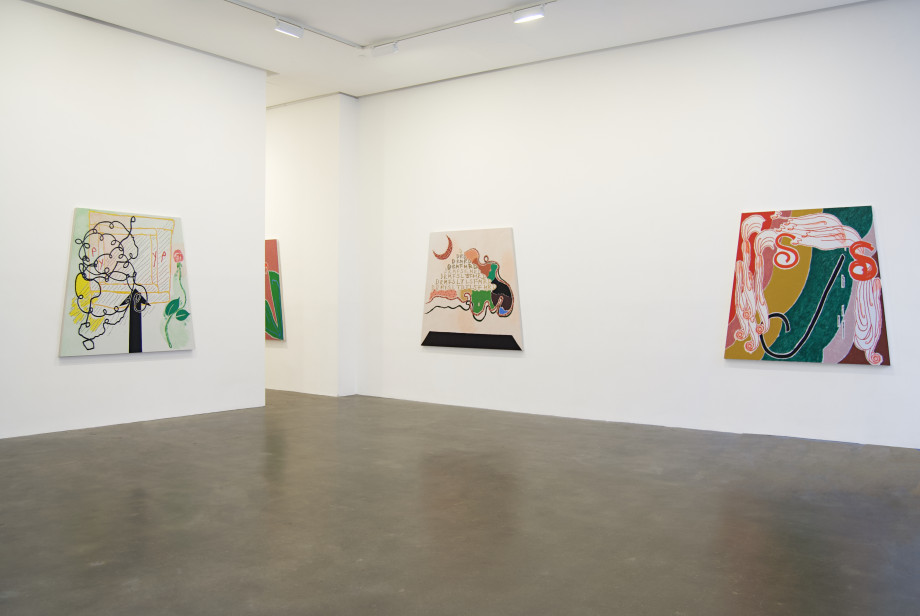
Contributed by Sharon Butler / I stopped by James Cohan on Grand Street to see Michelle Grabners beautiful show of small-scale paintings and panel pieces, sized like the cutting boards that inspired them. The paintings are based on textiles that Grabner altered by pulling threads out and creating grid-like patterns. The process references the ancient tale, in which Penelope, who said she would chose a suitor when the burial shroud she was weaving was done, unwove her progress each night. In a Zoom talk last week, Grabner explained that she manipulates abstract patterns, what she calls “found compositions,” to create analogues to political situations, such as stability, instability, and the steps in between.
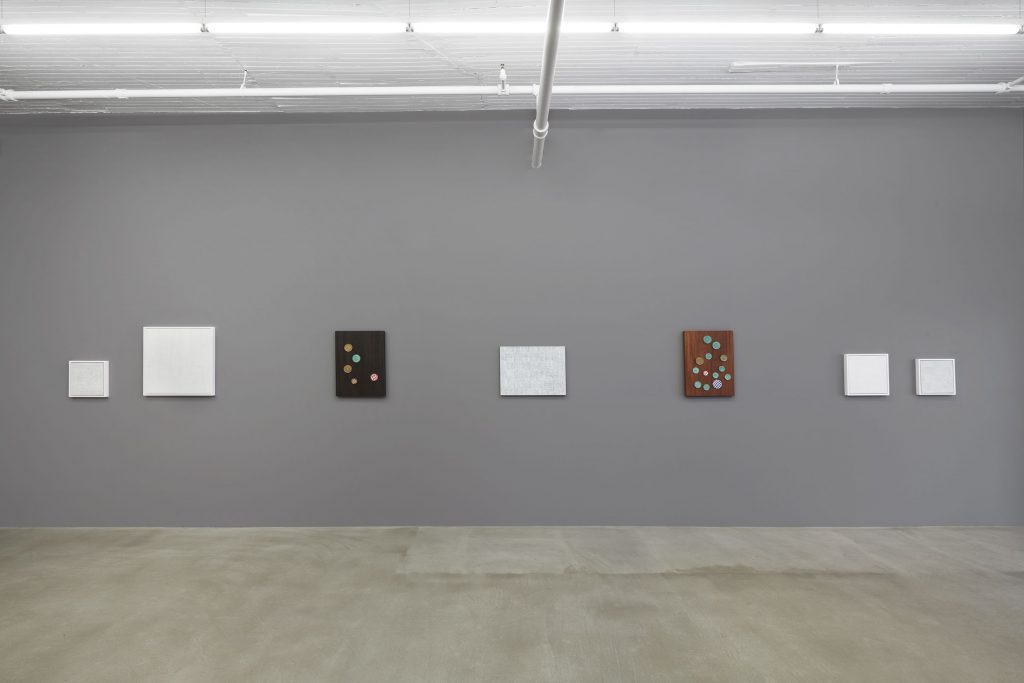
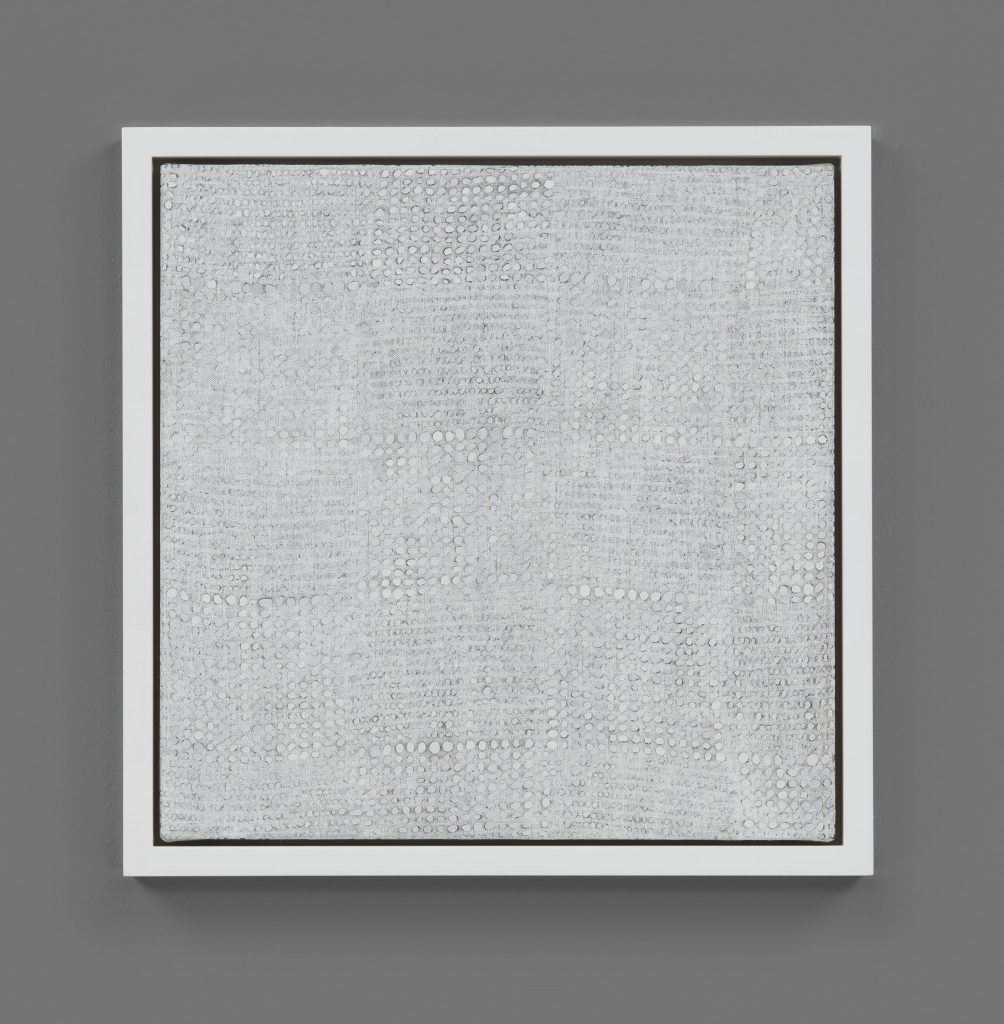
I caught Kate Pincus-Whitneys show Feast in the Neon Jungle at Fredericks & Freiser, which is up through March 20. Maximalist stilllife paintings — dining table scenes, seen from slightly above, overflow with energy and verve, brightly saturated color, and inventive brushwork. Each painting includes the image of a book, and I wonder if it takes the same amount of time to read the book as it does to make the painting. Looking at this lively show, I resolved to cheer up and have more fun.
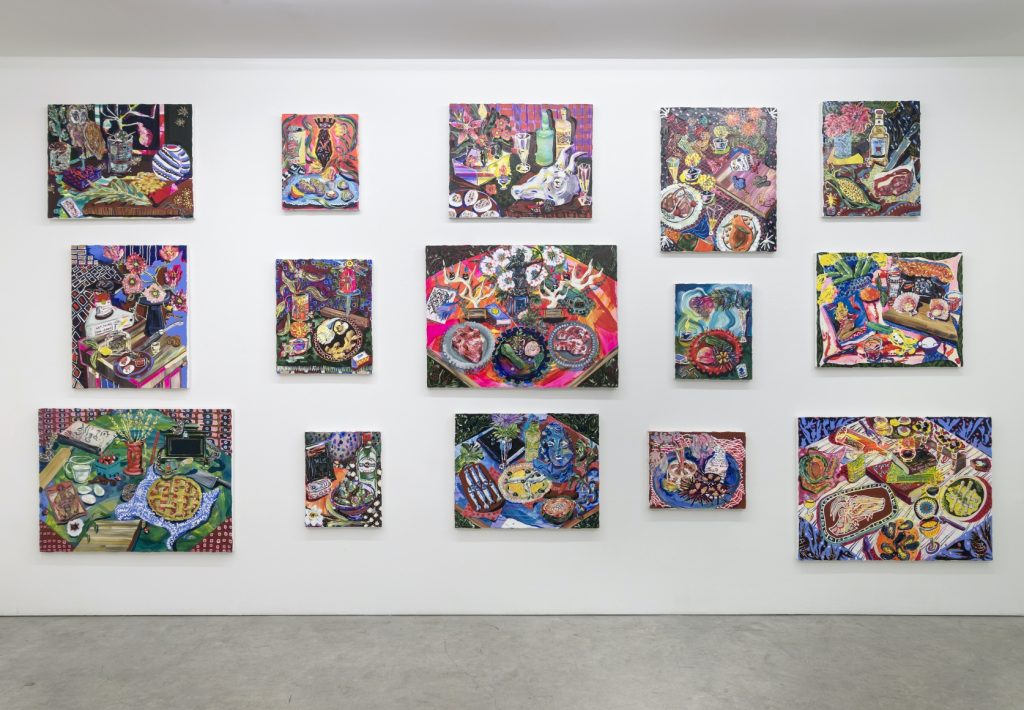
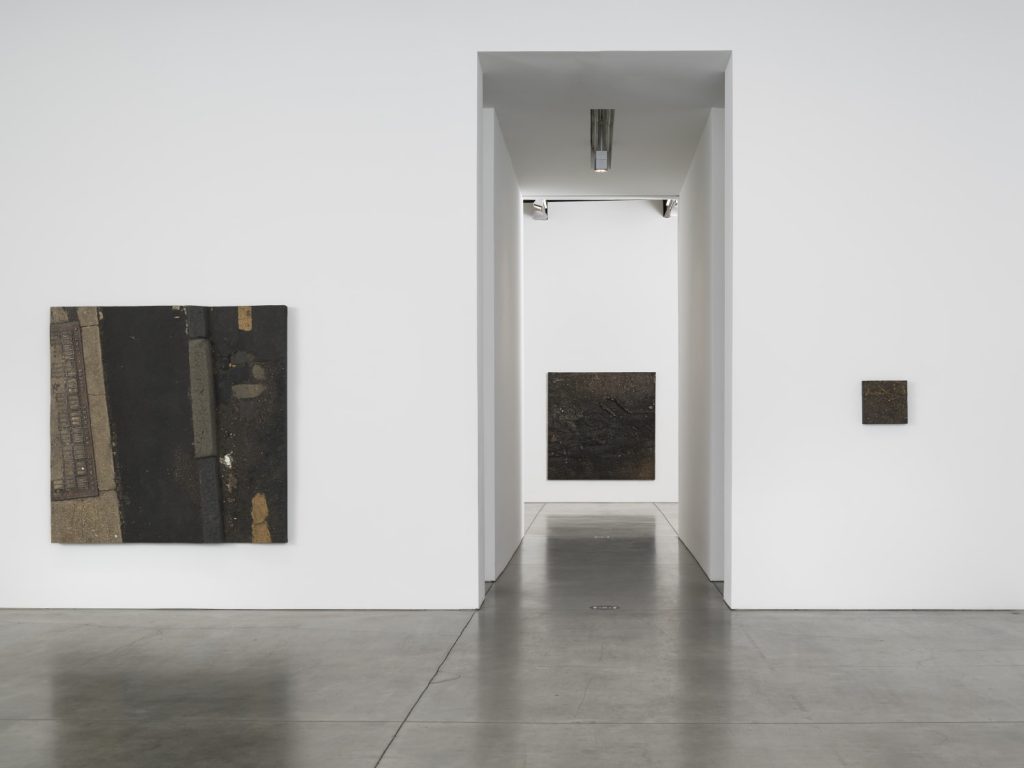
Boyle Family is a British collaborative group composed of Mark Boyle (b. 1934, d. 2005), his wife Joan Hills (b. 1931), and their children, Sebastian Boyle (b. 1962) and Georgia Boyle (b. 1963). “Nothing is more radical than the facts“ is on view at Luhring Augustine through April 24. The artists are known for making “earthprobes” in which they recreate randomly selected pieces of the earth’s surface using resin, fiberglass, and a mix of other materials. To assure that the selections were random, in 1969 they once asked blindfolded visitors to throw darts at a large-scale map of the world, then used those places as sites for their work, which seems even more significant now than when they were made. Hanging on the walls, they look like big thick cuts of earth but, in fact, they are objects made to look like earth–an interesting take on our relationship to nature and to the notions that earth artists like Robert Smithson explored.
Allison Miller‘s solo show, Upside Down Pyramid, is on view through April 25 at Susan Inglett. Miller has moved away from the idiosyncratic compositions of previous abstractions and embraced loose still life and landscape imagery precipitated by collages and photographs made with letters from the alphabet. According to the press release, she drew the letters freehand on paper in black acrylic paint, cut them out, and photographed them in the landscape. Then she then brought the letters back to her studio glued them on paper, and used them as the basis for a series of drawings. Here color, shape and line have the simplicity of illustrations from children’s books.
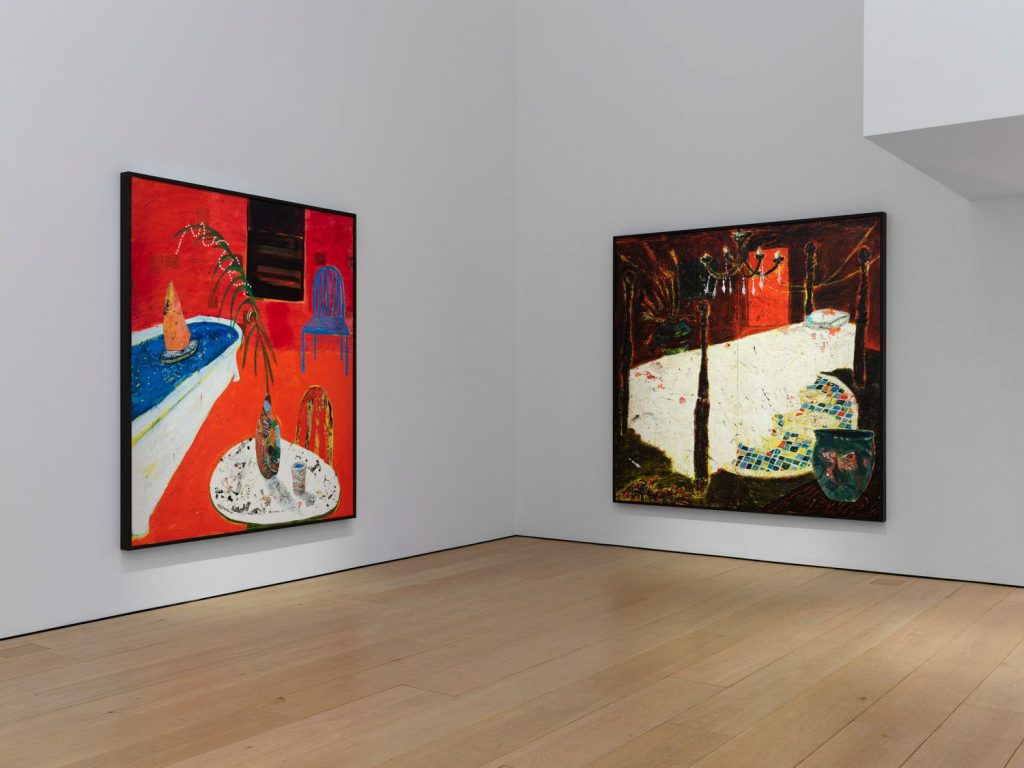
Angel Otero presents a series of interior scenes in “The Fortune of Having Been There” at Lehman Maupin. Angel moves away from his hanging-paint-skin abstractions to large-scale stretched canvases with representational images. From a distance they look like straight paintings, but up close you can see the elements — magazine images, paint scraps, jewelry — attached to the canvases. In one piece he has cut an image of chair caning out of a magazine in the shape of a parallelogram and pasted it to the table– a little nod to Picassos cubist paintings. The images are drawn from Oteros memories of Puerto Rico, combined with art historical references . Like comfort food during lockdown.
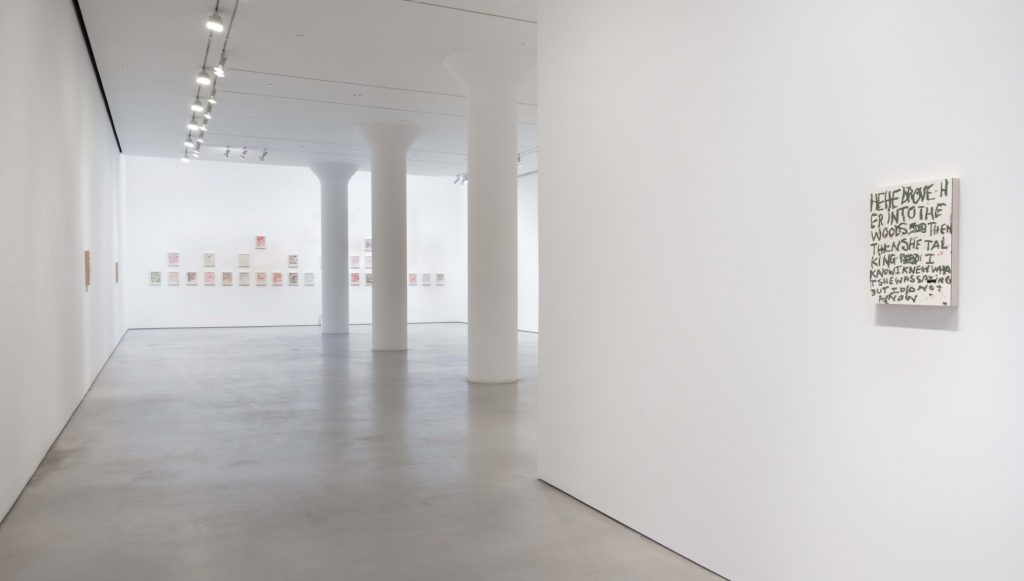
Pope.L presents Four Panels, a series of small-scale scrawled text paintings at Mitchell Innes-Nash through April 10. As Pope.L notes, writing itself becomes a re-coded visual communication via a set of physical actions: scratches, scrawls, hacks, gouges, smears, globs and caesura where the space between one moment of utterance (for example, a mark or an artwork) is also a kind of writing. This is a moving show, beautifully installed.
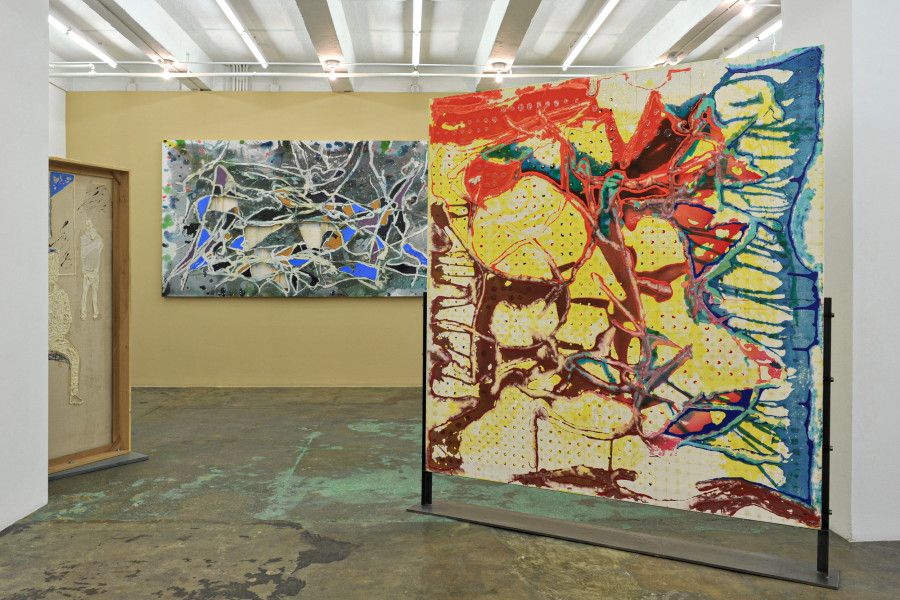
Dona Nelson crams Stretchers Strung Out On Space into the modest space at Thomas Erben. Winding around the freestanding large-scale, double-sided paintings, I found one in the back slowly spinning on a turntable, transforming painting into time-based media. The freestanding figurative works are painted from live models because Nelson enjoys having people around, collaborating with the models and with her assistants. Although her work seems like expressive action painting, Nelson has said that she is not an expressionist, but a materialist. She doesnt intentionally make paintings to express emotions or ideas outside of the materiality and process of the painting itself. Yet the work seems to tell a different story. Emotional content emerges everywhere, perhaps even when the artist may experience a complete presence in the moment and full focus on the physicality of painting.”
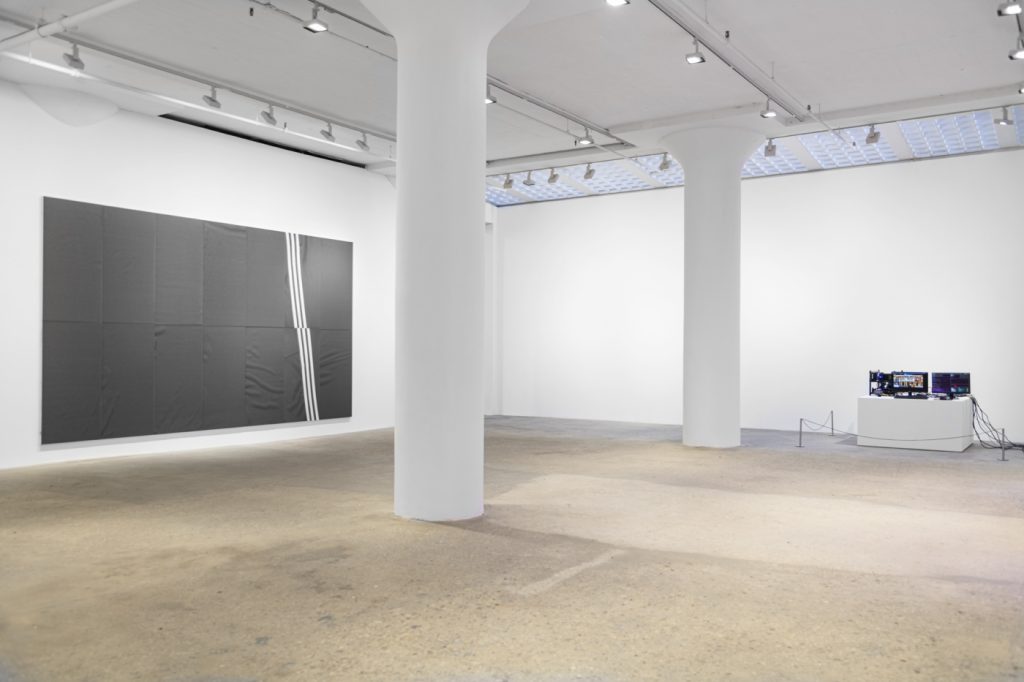
Cory Arcangel’ exhibition “Century 21” at Greene Naftali is awash in ideas about digital data. Scraping data off the internet, bot mischief, surveillance, and clever notions about our helplessness over artificial intelligence thickly inform the work, featured on various sexy TV installations throughout the galleries. The show uses flat screens in ways that will make the NFT crowd take note. Perhaps future art collectors will turn their homes in mini versions of Times Square?
Arcangel also includes a series of printed pieces called the Flatware series. Brand-name sweat pant fabrics have been scanned into the computer and enlarged, then prints transferred onto large Ikea tabletops. The press release reads: That the resulting works are so visually enticing adds another dimension to Arcangels critique, channeling the legacy of post-painterly abstraction without ever wielding a brush.” He argues that painting has no place to go after “so many hundreds of years and suggests that the best artists are in on the joke. I’d have to argue that technology may be timely and new, while painting is both of our time and timeless. The show is on view through April 17.
————–
Note: This post was originally written for a Clubhouse conversation called “Two Coats Of Paint Painting News,” hosted by NYC Art Club. Join us next Wednesday at 5 pm to continue the discussion of painting and related topics.
—————–
Related posts
Lindsay Walt: Infinite space, logical form, and inner contemplation
Images: Danielle Dimston

















Guess after living for long time see the close resemblance of new painters with those paintings by artists no longer living. Seeing this is heartbreaking. Many artists have fear of creating their own work. Let go of fear and jump kick your brain to have no fear of true creating—you have this life to be your true self. Ask the ancestors for help. CHEROKEE NATION! we are spiritual people.
Seems few people
Can offer their true self in painting. There is huge amount of fear and a lot of work to create something new that is wholly your own work. Let go of the fear.